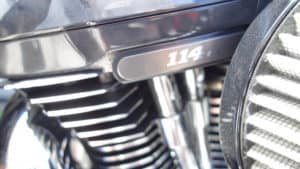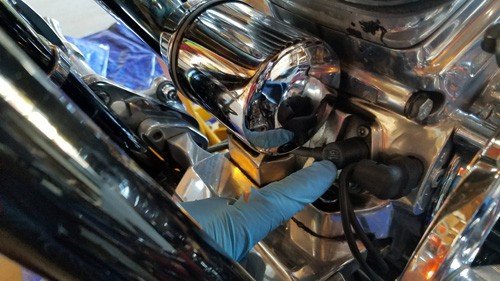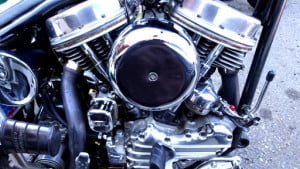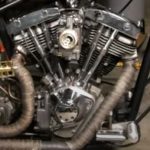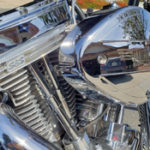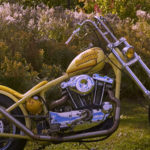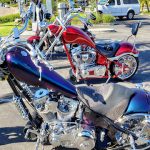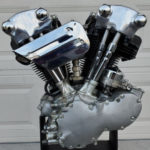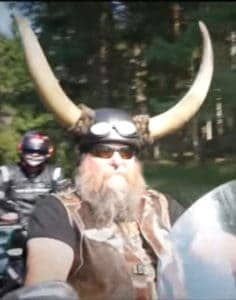Harley-Davidson Engine History
Harley-Davidson Engine History
From Wikipedia, the free encyclopedia:
The classic Harley-Davidson engines are V-twin engines, with a 45° angle between the cylinders. The crankshaft has a single pin, and both pistons are connected to this pin through their connecting rods.
This 45° angle is covered under several United States patents and is an engineering tradeoff that allows a large, high-torque engine in a relatively small space. It causes the cylinders to fire at uneven intervals and produces the choppy “potato-potato” sound so strongly linked to the Harley-Davidson brand.
To simplify the engine and reduce costs, the V-twin ignition was designed to operate with a single set of points and no distributor. This is known as a dual fire ignition system, causing both spark plugs to fire regardless of which cylinder was on its compression stroke, with the other spark plug firing on its cylinder’s exhaust stroke, effectively “wasting a spark”. The exhaust note is basically a throaty growling sound with some popping. The 45° design of the engine thus creates a plug firing sequencing as such: The first cylinder fires, the second (rear) cylinder fires 315° later, then there is a 405° gap until the first cylinder fires again, giving the engine its unique sound.
Harley-Davidson Engine History
Harley-Davidson has used various ignition systems throughout its history – be it the early points and condenser system, (Big Twin up to 1978 and Sportsters up to 1978), magneto ignition system used on some 1958 to 1969 Sportsters, early electronic with centrifugal mechanical advance weights, (all models 1978 and a half to 1979), or the late electronic with transistorized ignition control module, more familiarly known as the black box or the brain, (all models 1980 to present).
Starting in 1995, the company introduced Electronic Fuel Injection (EFI) as an option for the 30th anniversary edition Electra Glide. EFI became standard on all Harley-Davidson motorcycles, including Sportsters, upon the introduction of the 2007 product line.
In 1991, Harley-Davidson began to participate in the Sound Quality Working Group, founded by Orfield Labs, Bruel and Kjaer, TEAC, Yamaha, Sennheiser, SMS and Cortex. This was the nation’s first group to share research on psychological acoustics. Later that year, Harley-Davidson participated in a series of sound quality studies at Orfield Labs, based on recordings taken at the Talladega Superspeedway, with the objective to lower the sound level for EU standards while analytically capturing the “Harley Sound”. This research resulted in the bikes that were introduced in compliance with EU standards for 1998.
On February 1, 1994, the company filed a sound trademark application for the distinctive sound of the Harley-Davidson motorcycle engine: “The mark consists of the exhaust sound of applicant’s motorcycles, produced by V-twin, common crankpin motorcycle engines when the goods are in use”. Nine of Harley-Davidson’s competitors filed comments opposing the application, arguing that cruiser-style motorcycles of various brands use a single-crankpin V-twin engine which produce a similar sound. These objections were followed by litigation. In June 2000, the company dropped efforts to federally register its trademark.


